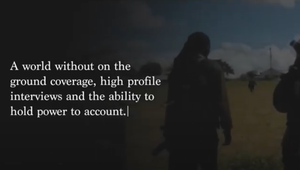
How to Defuse the Digital Assets Time Bomb

The massive growth in digital assets
(photos, video and audio) is viewed by the majority of publishers, broadcasters
and advertisers as a great opportunity to build their brand. As the public is increasingly shifting away
from traditional media consumption patterns, it’s giving brands of all kinds the
chance to fulfill consumers’ voracious appetites for digital entertainment,
information and social media interaction, whenever and wherever they want
it. This means organisations have the
chance to engage and converse on a deeper level than ever before.
However, the scale of digital assets is enormous. The most up-to-date figures from AOL/Nielsen in 2013 state that 27 million pieces of content are
shared every day and it must be a fair assumption that this has grown significantly
upwards in the past two years. Not only
is this giving companies a headache in terms of how to manage the sheer scale
of the assets they are producing, it is also opening them up to a potential
litigious nightmare too.
For any organisation using, sharing
or creating digital assets there are a number of legal issues. For instance, when using models or
celebrities, or imagery bought from photographers, brands need to understand
how they are allowed to use these. For
publishers and broadcasters the same is true for TV series licensed from abroad
or syndicated articles. In any of these
instances, there are likely to be rights issues around their use – but far too
many people are contravening these.
Often it’s a case of not understanding them, but unfortunately,
ignorance is not an excuse.
Every piece of professionally created
digital content is likely to be sold on the basis of a number of specific usage
restrictions. For example, maybe they
can only be used for a specified time period; there may be restrictions in
terms of the platforms on which they can be used – perhaps in print but not
online; often there are geographical limitations about where they can be used
etc.
Tracking and implementing these
permissions across a big organisation can be pretty tricky. A
number of different departments may be buying or using assets for different reasons
and often – even in large firms – there may be no central repository for
them. This makes it difficult for the
logging and tracking of permissions.
Other organisations do track these but do it manually, which is a
laborious and mind-numbing task – this is better than not having a system but it
is also less than ideal as, for instance, when permissions expire it’s unlikely
that assets stop being used.
If it sounds like a minefield, it is
– and it’s getting worse! Did you know,
for instance, that the EU is trying to make it illegal for individuals to publish their own
photos of famous landmarks, such as the London Eye, without permission from the
copyright holder?!
However, marketing automation technology
provides a way to manage and control digital asset rights in the form of a
Digital Asset Management (DAM) system. A
DAM system, such as WoodWing’s Elvis, will also create a workflow so that gaining,
tracking, and acting on permissions becomes part of an automatic process. Those who buy in assets upload them to the
DAM and have to input the relevant licensing, copyright and usage restrictions
– the system will flag up if more information is required. Content can be restricted so that it is
‘locked’ unless the person looking to use it agrees to comply with the
permissions. Similarly, if an asset’s
permission expires then it also becomes locked automatically.
A
DAM system is equally invaluable for a company to protect its own digital
assets as well as for complying with the rights of those they buy in. By using something like Elvis as the basis
for a searchable repository of assets it can make it easier for people to use
the correct ‘on brand’ imagery and provide them with clarity on how, where and
when they are allowed to use it.
Otherwise, companies can lose control of their brand as people use wrong
logos or old artwork by using Google as an alternative means to find
what they think they’re looking for.
Building digital asset management
into a business has become a ‘must have’ rather than a ‘nice to have’ as legal
action from artists, agencies, publishers and photographers are becoming more
widespread. Often when assets are
misused it might simply be a case of lost time in sorting problems out or small
fines, but these can really add up. There
can also be landmark cases such as that with photographer Daniel Morel was awarded $1.2m when Agence France-Presse (AFP) and
Getty Images used his photos from the Haiti earthquake without permission.
Implementation of DAM is only the
start of the process though.
Organisations also need, at the same time, to educate the whole business
about the basics of digital asset rights (don’t use a photo unless you have
permission!) and embed this into the culture to make sure that people err on
the side of caution.
By Russell Pierpoint, Managing Director, Evolved Media Solutions










